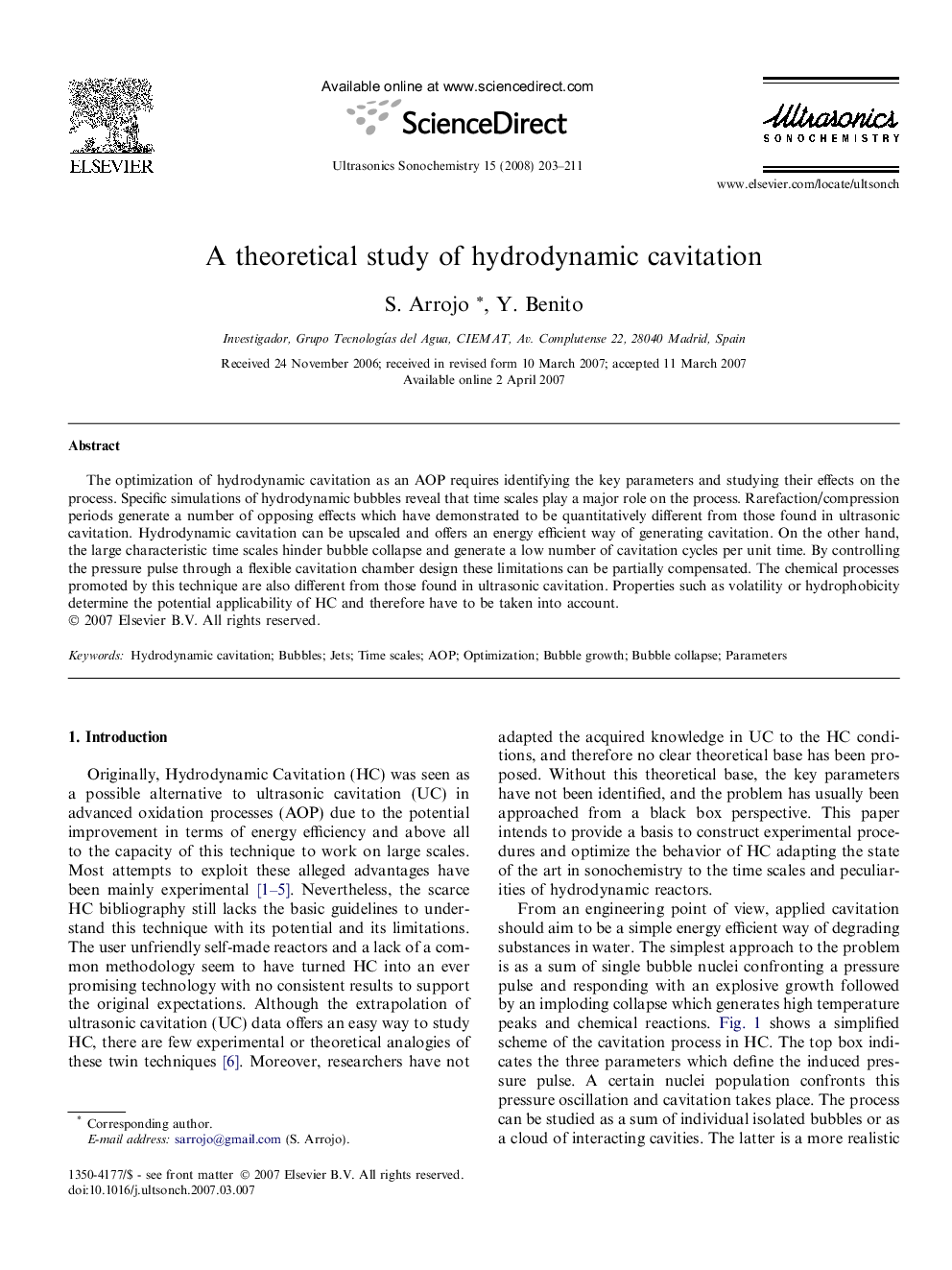| Article ID | Journal | Published Year | Pages | File Type |
|---|---|---|---|---|
| 1269982 | Ultrasonics Sonochemistry | 2008 | 9 Pages |
The optimization of hydrodynamic cavitation as an AOP requires identifying the key parameters and studying their effects on the process. Specific simulations of hydrodynamic bubbles reveal that time scales play a major role on the process. Rarefaction/compression periods generate a number of opposing effects which have demonstrated to be quantitatively different from those found in ultrasonic cavitation. Hydrodynamic cavitation can be upscaled and offers an energy efficient way of generating cavitation. On the other hand, the large characteristic time scales hinder bubble collapse and generate a low number of cavitation cycles per unit time. By controlling the pressure pulse through a flexible cavitation chamber design these limitations can be partially compensated. The chemical processes promoted by this technique are also different from those found in ultrasonic cavitation. Properties such as volatility or hydrophobicity determine the potential applicability of HC and therefore have to be taken into account.
